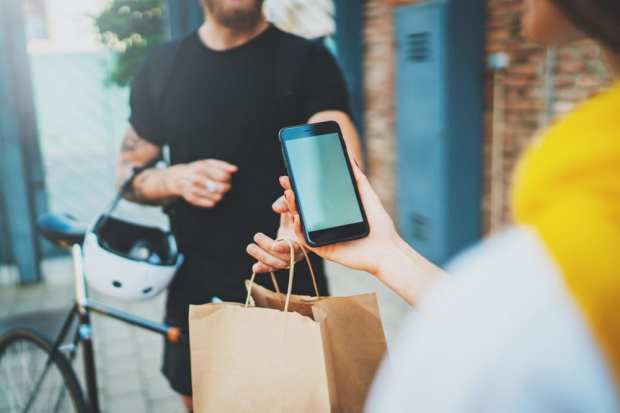The Wild Ride Of Mobile Order-Ahead Apps

People for whom dining out is one of life’s best pleasures have had a rough time in 2020, and it’s probably going to stay weird for a while. Even New York City has now greenlit indoor dining, but the great restaurant sector reset of 2020 is far from finished.
As we discover in PYMNTS’ September 2020 Mobile Order-Ahead Tracker® done in collaboration with Kount, “[The] number of food delivery app users could climb 25.2 percent to 45.6 million in 2020 as consumers continue to heavily rely on these services. This total could dip to 44.1 million in 2021 as indoor restaurant dining spaces reopen and consumers venture out to eat again. The upward trend is not going away, however, and the number of U.S. app users is predicted to bounce back by 2023 to as many as 53.9 million.”
When the seesaw stops and COVID cools down, mobile order-ahead (MOA) apps are poised to control a much larger swath of food commerce, with new complexities attending that growth. Those include an anticipated wave of chargebacks from friendly fraud, and more serious cybercrime intrusions that also come with the sudden expansion of digital commerce.
Getting With the MOA Program
Eateries that onboarded to MOA aggregator platforms like Uber Eats and Grubhub are now focusing on integrating artificial intelligence (AI) into digital menu boards, while some have turned to cloud-based platforms to streamline various facets of the order management experience.
Digital adoption is imperative now, as quick-service restaurants (QSRs) and fast-casual chains can’t fill tables as they could mere months ago.
Transformation is now a make-or-break proposition for food establishments, with recent research suggesting that eateries using technologies to enable contactless ordering and delivery are poised to see hardy growth.
“Pizza chain Domino’s stated that its takeout and delivery sales had increased 14 percent during an eight-week period ending in mid-May, for example,” the Tracker states.
In another survey, 39 percent of consumers said they had utilized curbside pickup after the pandemic began — an increase from the 28 percent who did so previously. But the introduction of new systems also brings new cyberthreats that must be carefully managed.
“Each of those areas — accounts, payments, loyalty programs — are all opportunities for fraudsters to potentially exploit,” Rich Stuppy, chief customer experience officer at Kount, told PYMNTS.
“With more consumers making more digital purchases than ever before, fraudsters hope to slip through the cracks in the midst of other priorities. eCommerce businesses, including QSRs, can partner with advanced, AI-driven fraud prevention platforms that protect the entire customer journey. Solutions like Kount are sophisticated enough to understand the types of frequent, small-dollar-amount purchases at QSRs while being able to stop both emerging and existing attacks,” he said.
Chargeback Hazard
As for the feared avalanche of friendly fraud that may arise from the confusion of 2020, this is another area where restaurant operators are hardening cyber detection and defense.
By way of definitions, “Friendly fraud begins when consumers request chargebacks from their financial institutions (FIs), claiming that certain transactions were fraudulent or that their orders never arrived. Banks typically then reverse these transactions, reimbursing customers without ever requiring them to contact the restaurant — even though eateries are usually left footing the bill,” according to the September 2020 Mobile Order-Ahead Tracker®.
“Approximately 40 percent of consumers state that complicated login methods requiring many steps when placing food orders are the top cause of frustration they face when ordering online or through mobile apps,” per the Tracker. “Restaurants thus need to invest in robust fraud prevention measures that can tackle the issue of chargebacks without putting off legitimate customers.”
